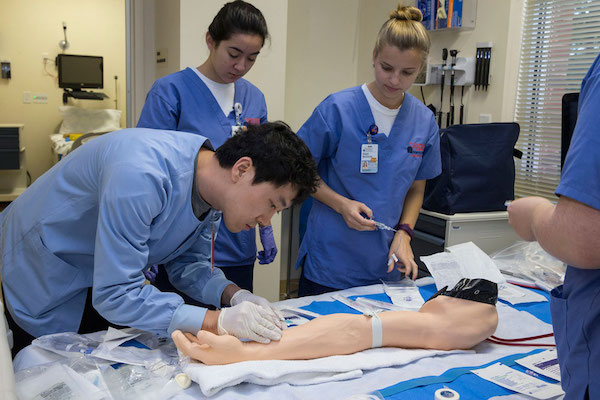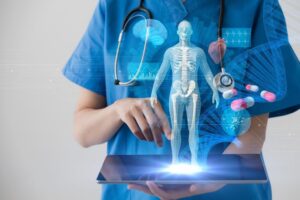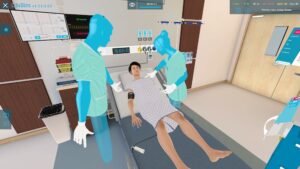Simulation in Nursing Education
Simulation in Nursing Education is used to teach learners concepts relating to the care of patients who are either sick or infirm. Through the replication of real-world nursing scenarios and experiences, learners can practice the skills necessary to succeed in the field, without ever putting a real-life patient at risk. Using carefully controlled and monitored settings, trainees are able to receive constructive feedback and thereby enhance their overall clinical knowledge.
Becoming more popular across educational settings, the use of Simulation in Nursing Education has helped shape the next generation of nursing students, graduates and clinicians themselves. Although certain elements of nursing education have already known to be simulated for learning purposes for quite some time, including the taking of blood pressure readings and performing CPR, simulation labs have led to even more simulation scenarios available.
For example, through simulation learners can provide elements of physical care, such as giving injections or learning how intubation works on manikins. Educational labs in nursing schools may also include standardized patients (actors), various kinds of lifelike anatomical models and full-scale simulation manikins that manifest signs and respond to treatment decisions and other actions.
Sponsored Content:
This safe realism is one of the greatest benefits of Nursing Simulation, and allows nursing students to truly hone their abilities and skills—and commit every possible error—without harming real patients. Participating in a simulation where there are no penalties for making mistakes is quite different than having clinical skills evaluated in a simulation, and many learners appreciate the risk-free environments.
Controlled learning environments also alleviates the need for nursing education programs to locate clinical patients willing to be physically present and a part of the training process. According to the NCSBN national simulation study: “A longitudinal, randomized, controlled study replacing clinical hours with simulation in pre-licensure nursing education,” “up to 50 percent of clinical hours in a pre-licensure RN program may be replaced by simulated experiences without negative impacts on learning outcomes.”
Leading to the different types of simulation used for learning, there are many options available for simulation equipment. These training tools range from low-fidelity anatomical models used by learners to practice injections and other skills, to high-fidelity manikins that reproduce physiologic functions and are programmed to respond to interventions in real time.
Sponsored Content:
Additionally, audio-video recording devices allow learners to review their performance, or to have their performance reviewed by an experienced professional. Along with providing the means to debrief, medical supplies and equipment enhance the realism and authenticity of each simulation. Virtual reality applications also offer new possibilities for developing immersive clinical experiences, and many software packages that run on various platforms are available.
With many educational and training uses, simulated scenarios should not be limited to learners, since many programs exist to help practicing clinicians further their training or to assist hospitals. The goal of having existing clinicians practice under simulated settings is to achieve such benchmarks as low infection rates and early identification and management of sepsis.
The training for clinicians can be used to emphasis the importance of teamwork, crisis resource management and error prevention as well. This is especially true in such specialties as anesthesiology, labor and delivery, emergency medicine, intensive care and pediatrics. Licensed nurses who participate in medical simulation can even receive a certificate of attendance, with credit hours that may be converted to CEs or CEUs.
While healthcare simulation has proven advantageous to both learners and professionals, facilities employing the technology must understand that faculty time is needed to develop any simulation. Despite learners not necessarily requiring the same intensity of faculty-leaner contact required for placements in practice settings, each scenario can turn out to be equally as demanding.
Another potential hurdle is that when equipment and technology are used, expenses build quickly. The costs of setting up a simulation environment can swiftly reach hundreds of thousands of dollars.
Aside from expenses, numerous factors have been driving the proliferation of simulation training, including an increase in the number of undergraduate nursing programs. This has led to more competition for clinical placement sites. By transforming nursing education from content delivery to contextual learning, simulation offers trainees many of the experiences they need to safely transition into practice, and therefore Simulation in Nursing Education is encouraged by many healthcare professionals to alter existing pedagogical approaches.
Click Here to Connect to Leading Nursing Simulation Vendors
While many specifics regarding the best way to use simulation are still being addressed, experts agree that the practice is essential to provide learners with a safe, trustworthy and supportive learning environment. Simulation further assists educators and learners in feeling at ease and improving their ability to engage fully.
Simulation in Nursing Education Tools
Working together with the medical simulation company, Laerdal, the National League for Nursing has launched Simulation Education Solutions for Nursing (SESN). This simulation solution helps schools and programs, including both undergraduate and graduate, to implement simulation training for nursing learners.
In addition, SESN ensures that programs are compliant with the three best practice guidelines (those of the NCSBN, INACSL, and SSH) and that they adhere to the specific requirements of their individual state boards of nursing. These boards determine how many hours of clinical practice may be substituted by simulation, which is largely determined based on individual state requirements.
Also working to advance the science of healthcare simulation, the International Nursing Association for Clinical Simulation and Learning (INACSL) is a community of practice. The association is a place where novice and expert practitioners can network, share ideas, learn from and with each other about the knowledge, skills and attitudes necessary for best practices in the use of simulation.
HealthySimulation.com is dedicated to providing the latest Nursing Simulation news and resources from around the world. To follow along, sign up for our free nursing simulation email newsletter, follow @HealthySim on Twitter and @HealthySim on Facebook, or join our HealthySim LinkedIn Group!
To achieve these goals, INACSL has developed the first standards for simulation practice: the INACSL Standards of Best Practice: Simulation. Published in the Clinical Simulation in Nursing, INACSL’s monthly, electronic research journal, these freely accessible articles provide the industry with guidelines for creating and executing healthcare simulations.
The Leadership of INACSL thoughtfully examines all opportunities and options to ensure that all decisions benefit the members, as well as align with the mission and vision of the organization. Above all, the mission is to advance the science of healthcare simulation and to be the global leader in transforming practice to improve patient safety through excellence in healthcare simulation.
Also contributing to Simulation in Nursing Education, a National Simulation Survey put together by the National Council of State Boards of Nursing provides statistics about the state of simulation today. The study had some really interesting statistics about the state of simulation in the nation today. The survey is available online at the Journal of Nursing Regulation, and demonstrates the large range in the length of scenarios available, from 10 minutes to 60 minutes.
Nursing in Simulation Education Latest News

2024 September NLN Education Texas Summit: Daring Competency-Based Education

Transform Nurse Training: See Your Sim Space in New Ways with HTC VIVE XR Elite

Nursing Simulation Conference INACSL 2024 Celebrates New Attendance Record

SimVS IV Pump Simulator Training for LPN / LVN Nurses

Healthcare Simulation Research May 2024

Dr. Pam Jeffries Upcoming Webinar on Developing Healthcare Simulation Centers to Create Realistic Clinical Scenarios!

Global Medical Simulation News Update April 2024
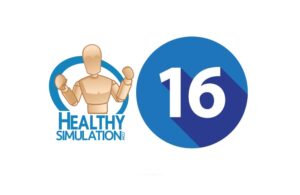
16 Must-Know Healthcare Simulation Key Terms

NLN Simulation Innovation Resource Center (SIRC) Homegrown Solutions
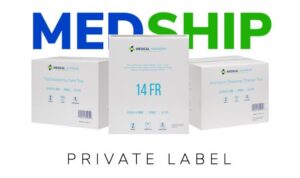
Consider Medical Shipment for Your Nursing Simulation Supplies in 2024
Sponsored Content:



